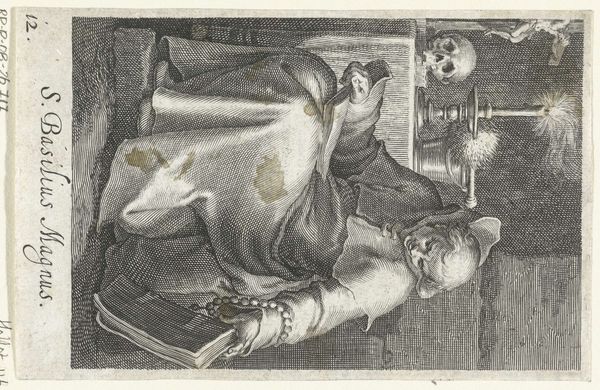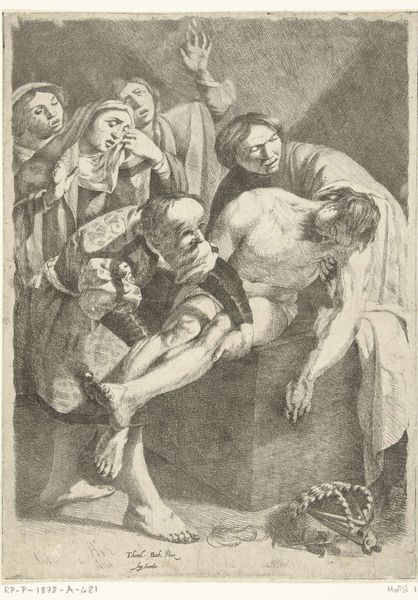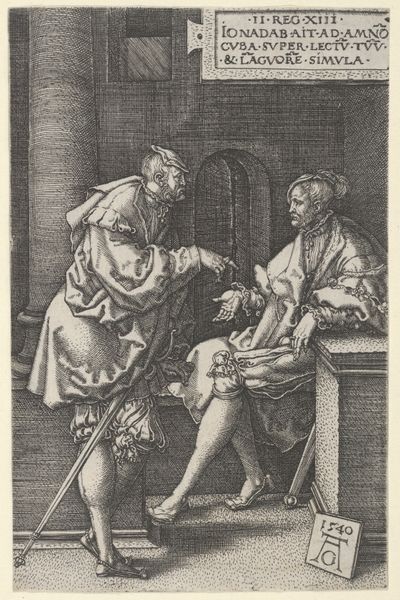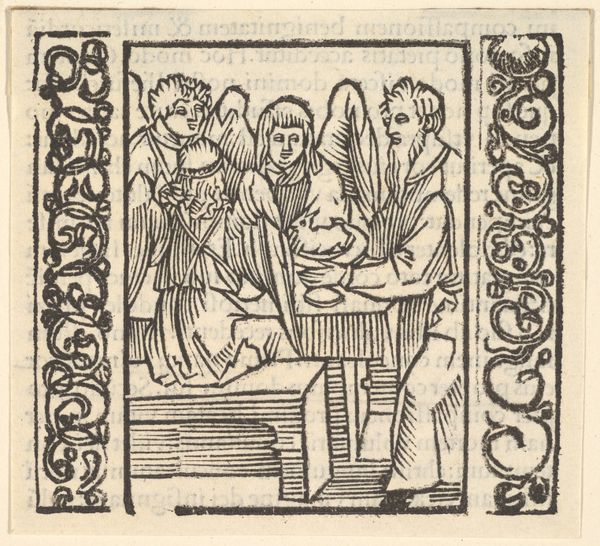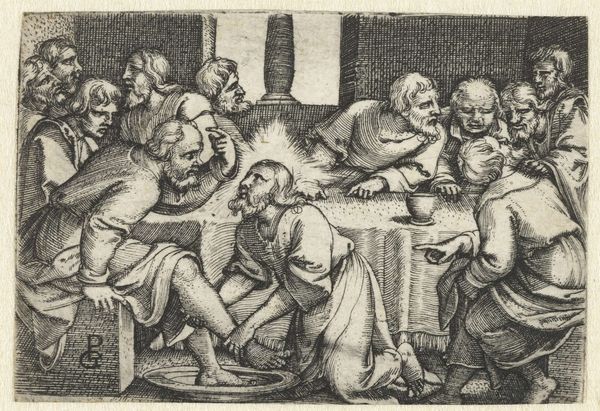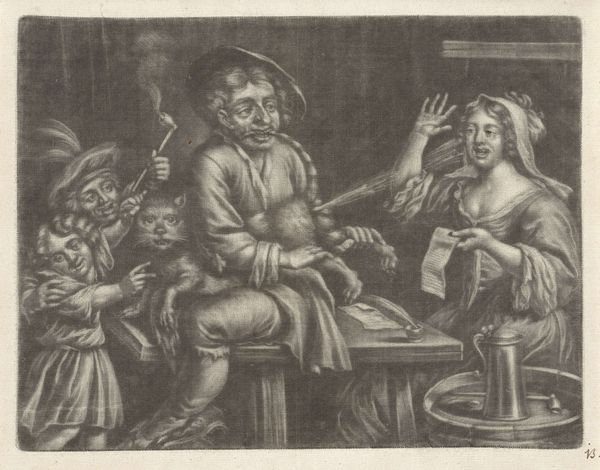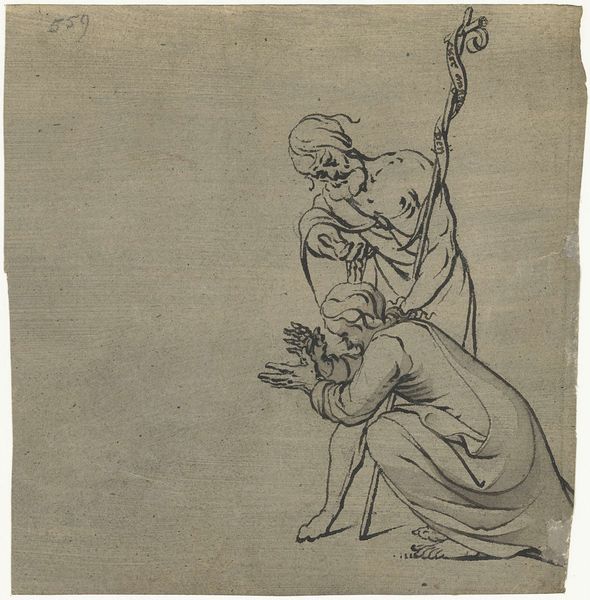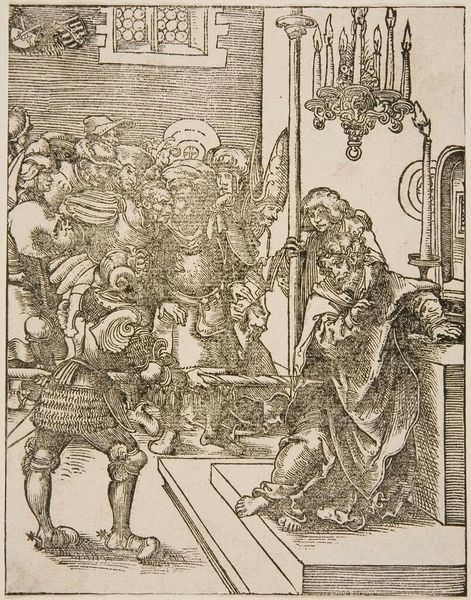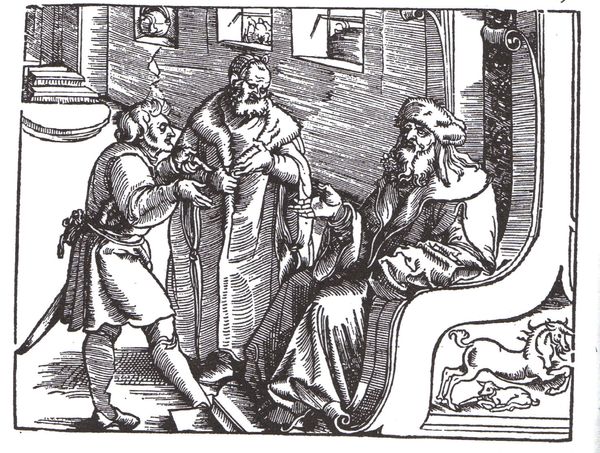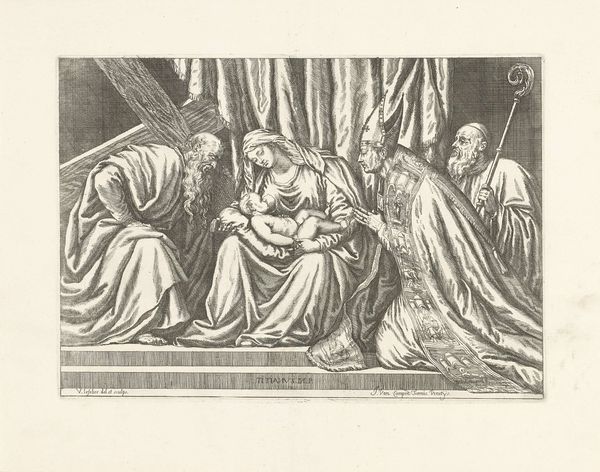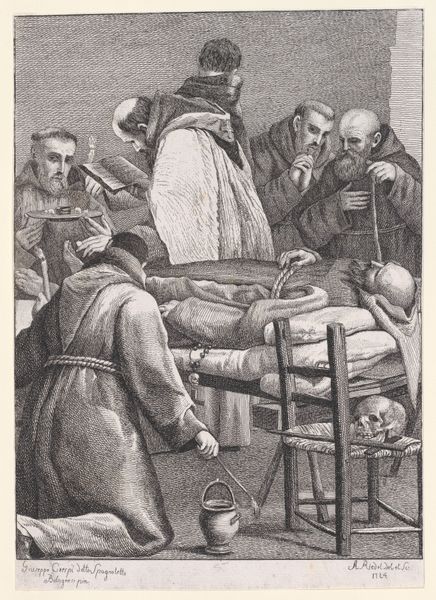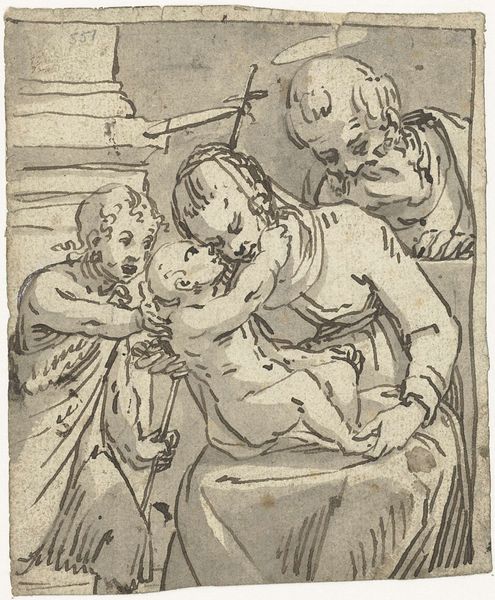
Dimensions: 76 x 341 cm
Copyright: Public domain
Curator: Matthias Grünewald's "The Entombment," part of the Isenheim Altarpiece created around 1515, offers a chilling meditation on loss. Editor: My immediate response is grief. The desaturated palette and slumped posture of Christ conveys such utter despair. It is deeply unsettling. Curator: Indeed. What’s significant here is where this altarpiece was originally displayed. It was located in a hospital built by the Antonite monks that treated patients with horrible skin diseases like ergotism and the plague. Consider how seeing such human suffering as displayed on Christ’s body would give patients a way to express their own experience. Editor: The fact that this painting was housed in a place of healing amplifies its impact. I am drawn to the color, but also lack thereof: the pallid skin tones, the somber blues and grays. These speak to me about illness, decay and the communal sorrow of facing suffering. Curator: What Grünewald achieves, which sets him apart, is an overt rejection of Renaissance idealism, opting for raw, almost brutal realism. The figures are far from idealized; instead, they reflect pain, exhaustion, the physical degradation of Christ. His attention to the texture and tonal changes suggests realism through observed physical decay and emotional reaction to the event portrayed. Editor: The inclusion of figures overcome with such obvious anguish reflects that loss in real time, drawing the viewers to question that same reality. The Isenheim Altarpiece creates that shared visual narrative for communal grief to not be borne in isolation, but together, with art offering this emotional context. Curator: This section of the altarpiece shows us the communal aspect of both healing and religion, a shared response to life. It suggests a dialogue around illness, and gives space to validate their individual emotional journeys. Editor: And within this history is something radical about creating accessible language and stories for lived experience that allows one to reclaim, share, and sit in their most vulnerable selves. This reclamation holds much strength for healing the pain so evident within Grünewald's artwork.
Comments
No comments
Be the first to comment and join the conversation on the ultimate creative platform.

